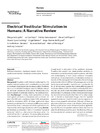Identificador persistente para citar o vincular este elemento:
https://accedacris.ulpgc.es/jspui/handle/10553/77843
| Campo DC | Valor | idioma |
|---|---|---|
| dc.contributor.author | Sluydts, Morgana | en_US |
| dc.contributor.author | Curthoys, Ian | en_US |
| dc.contributor.author | Vanspauwen, Robby | en_US |
| dc.contributor.author | Papsin, Blake Croll | en_US |
| dc.contributor.author | Cushing, Sharon Lynn | en_US |
| dc.contributor.author | Ramos, Ángel | en_US |
| dc.contributor.author | Ramos De Miguel, Ángel | en_US |
| dc.contributor.author | Borkoski Barreiro, Silvia | en_US |
| dc.contributor.author | Barbara, Maurizio | en_US |
| dc.contributor.author | Manrique, Manuel | en_US |
| dc.contributor.author | Zarowski, Andrzej | en_US |
| dc.date.accessioned | 2021-02-24T16:09:48Z | - |
| dc.date.available | 2021-02-24T16:09:48Z | - |
| dc.date.issued | 2019 | en_US |
| dc.identifier.issn | 1420-3030 | en_US |
| dc.identifier.uri | https://accedacris.ulpgc.es/handle/10553/77843 | - |
| dc.description.abstract | In patients with bilateral vestibulopathy, the regular treatment options, such as medication, surgery, and/ or vestibular rehabilitation, do not always suffice. Therefore, the focus in this field of vestibular research shifted to electrical vestibular stimulation (EVS) and the development of a system capable of artificially restoring the vestibular function. Key Message: Currently, three approaches are being investigated: vestibular co-stimulation with a cochlear implant (CI), EVS with a vestibular implant (VI), and galvanic vestibular stimulation (GVS). All three applications show promising results but due to conceptual differences and the experimental state, a consensus on which application is the most ideal for which type of patient is still missing. Summary: Vestibular co-stimulation with a CI is based on “spread of excitation,” which is a phenomenon that occurs when the currents from the CI spread to the surrounding structures and stimulate them. It has been shown that CI activation can indeed result in stimulation of the vestibular structures. Therefore, the question was raised whether vestibular costimulation can be functionally used in patients with bilateral vestibulopathy. A more direct vestibular stimulation method can be accomplished by implantation and activation of a VI. The concept of the VI is based on the technology and principles of the CI. Different VI prototypes are currently being evaluated regarding feasibility and functionality. So far, all of them were capable of activating different types of vestibular reflexes. A third stimulation method is GVS, which requires the use of surface electrodes instead of an implanted electrode array. However, as the currents are sent through the skull from one mastoid to the other, GVS is rather unspecific. It should be mentioned though, that the reported spread of excitation in both CI and VI use also seems to induce a more unspecific stimulation. Although all three applications of EVS were shown to be effective, it has yet to be defined which option is more desirable based on applicability and efficiency. It is possible and even likely that there is a place for all three approaches, given the diversity of the patient population who serves to gain from such technologies. | en_US |
| dc.language | eng | en_US |
| dc.relation.ispartof | Audiology and Neurotology Extra | en_US |
| dc.source | Audiology and Neurotology Extra [ISSN 1420-3030], v. 25 , p. 6-24 | en_US |
| dc.subject | 32 Ciencias médicas | en_US |
| dc.subject.other | Electrical stimulation | en_US |
| dc.subject.other | Vestibular implant | en_US |
| dc.subject.other | Galvanic vestibular stimulation | en_US |
| dc.subject.other | Vestibular co-stimulation | en_US |
| dc.subject.other | Humans | en_US |
| dc.title | Electrical Vestibular Stimulation in Humans: A Narrative Review | en_US |
| dc.type | info:eu-repo/semantics/article | en_US |
| dc.identifier.doi | 10.1159/000502407 | en_US |
| dc.description.lastpage | 24 | en_US |
| dc.identifier.issue | Suppl. 1-2 | - |
| dc.description.firstpage | 6 | en_US |
| dc.investigacion | Ciencias de la Salud | en_US |
| dc.type2 | Artículo | en_US |
| dc.description.numberofpages | 19 | en_US |
| dc.utils.revision | Sí | en_US |
| dc.date.coverdate | Septiembre 2019 | en_US |
| dc.identifier.ulpgc | Sí | en_US |
| dc.contributor.buulpgc | BU-MED | en_US |
| dc.description.sjr | 1,471 | |
| dc.description.sjrq | Q1 | |
| dc.description.esci | ESCI | |
| item.grantfulltext | open | - |
| item.fulltext | Con texto completo | - |
| crisitem.author.dept | GIR SIANI: Modelización y Simulación Computacional | - |
| crisitem.author.dept | IU Sistemas Inteligentes y Aplicaciones Numéricas | - |
| crisitem.author.dept | GIR SIANI: Modelización y Simulación Computacional | - |
| crisitem.author.dept | IU Sistemas Inteligentes y Aplicaciones Numéricas | - |
| crisitem.author.dept | GIR SIANI: Ingeniería biomédica aplicada a estimulación neural y sensorial | - |
| crisitem.author.dept | IU Sistemas Inteligentes y Aplicaciones Numéricas | - |
| crisitem.author.orcid | 0000-0002-0528-815X | - |
| crisitem.author.orcid | 0000-0002-0528-815X | - |
| crisitem.author.orcid | 0000-0002-5743-4374 | - |
| crisitem.author.parentorg | IU Sistemas Inteligentes y Aplicaciones Numéricas | - |
| crisitem.author.parentorg | IU Sistemas Inteligentes y Aplicaciones Numéricas | - |
| crisitem.author.parentorg | IU Sistemas Inteligentes y Aplicaciones Numéricas | - |
| crisitem.author.fullName | Ramos De,Ángel | - |
| crisitem.author.fullName | Ramos De,Ángel | - |
| crisitem.author.fullName | Borkoski Barreiro, Silvia | - |
| Colección: | Artículos | |
Citas de WEB OF SCIENCETM
Citations
33
actualizado el 08-jun-2025
Visitas
113
actualizado el 13-abr-2024
Descargas
96
actualizado el 13-abr-2024
Google ScholarTM
Verifica
Altmetric
Comparte
Exporta metadatos
Los elementos en ULPGC accedaCRIS están protegidos por derechos de autor con todos los derechos reservados, a menos que se indique lo contrario.
